Bugatti History – A legend revived, twice!
Jaap Horst
Top: First rendering of the new Bugatti, which was used in all articles about the revival of the Bugatti marque.
Of all famous pre-war marques, there was one that stood out above all other marques. Bugatti had had a dedicated group of devoted marque followers and already in 1929 the Bugatti Owners Club was founded, decades before any other marque club. All through the post-war years marque enthusiasts dedicate their time to their cars, and to the different clubs which are established in many of the European countries as well as in the USA.
So, when in the 2nd half of the 1980’s a group of Italians around Paolo Stanzani of Lamborghini fame, French professor Jean-Marc Borel and Italian entrepreneur Romano Artioli plan to build an all-new supersportscar, they prefer the Bugatti name over the also possible Isotta-Fraschini. The rights to the Bugatti name are still with the French company Messier Hispano, who had taken over Bugatti in 1965. The name is acquired, and Bugatti Automobili SpA is founded in 1987.
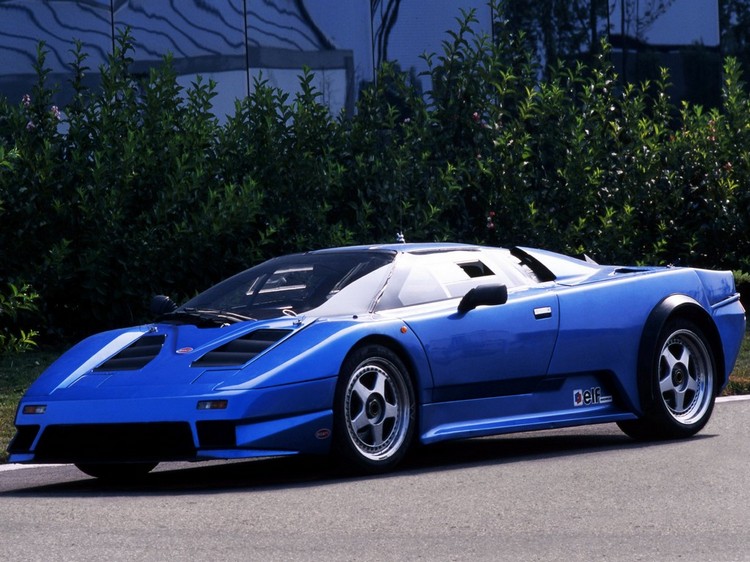
One of the prototypes for the new Bugatti, this one already showing most of the final shape.
A terrain of 75,000 m2 at Campogalliano, near Modena, is found and in the first half of 1988, construction starts of the specially designed factory for the construction of the new Gran Turismo.
In 1988, the team is focused on finding solutions that stress the technical superiority of the project. To be able to compete with Ferrari (the F40 is in production), Stanzani chooses several very progressive technological solutions from the outset: 4 wheel drive, 4 turbos, 5 valves per cylinder in a 12 cylinder engine. In both engine and chassis innovative light-weight materials are used. The first chassis in aluminium is supplied by Aérospatiale in the first months of 1989. March 16, 1989 one of the 3.5 liter engines, rated at 560 HP, runs on the test bench.
There were various different designs for the body of the Bugatti, the one similar to the Lamborghini Diablo or Cizeta Moroder were discarded, and finally a very clean design by Marcello Gandini is chosen. There are not many Bugatti clues in the design, there is just a tiny horseshoe shape in the grille remembering the Bugatti Radiators, and of course the wheels, which are inspired by the Bugatti Type 50 wheels.
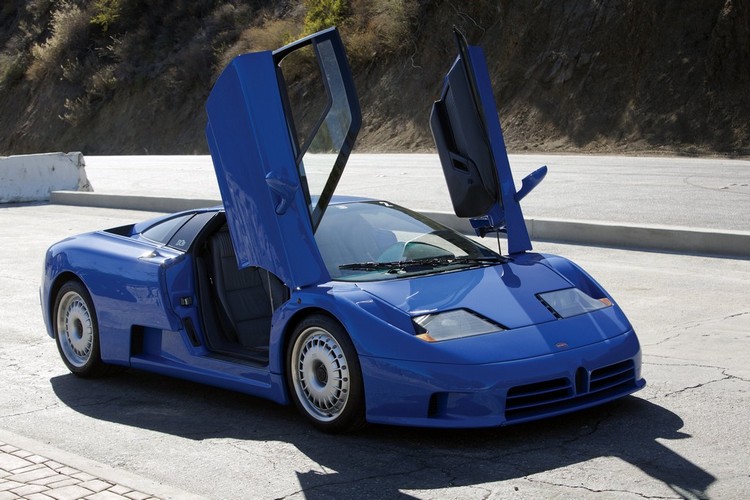
The production EB110GT showing the scissor doors and the characteristic French racing blue (or Bugatti blue) colour.
The car, christened EB110GT after the 110’th birthday of Ettore Bugatti, is presented in Paris on September 15, 1991. For a short while the EB110GT was the most impressive supersportscar, better than the Ferrari F40 or Porsche 959. However, in 1992 the McLaren F1 was presented, which was faster and considerably lighter.
Bugatti presented the lighter and more powerful EB110SS version in 1992, which had 610 HP, and boasted a top speed of 348 km/h and 0-100 km/h acceleration in 3.2 seconds.
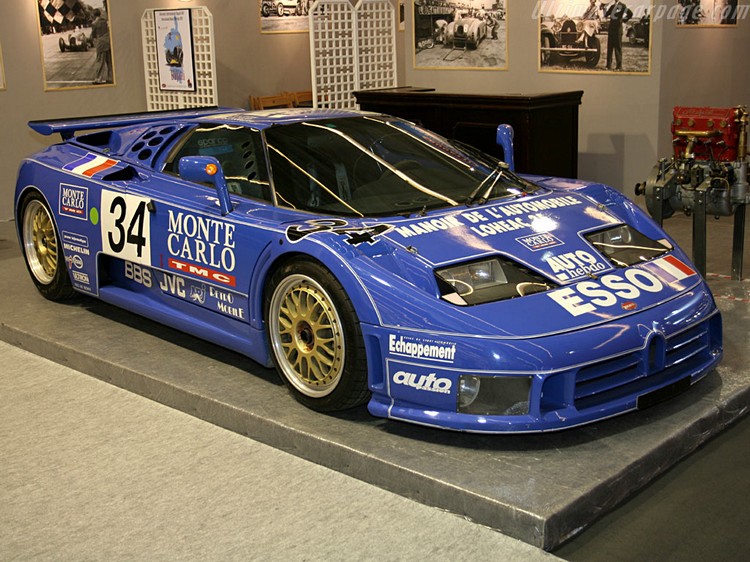
The EB110 SS as it raced at Le Mans in 1994.
This EB110SS is raced on various occasions, the best known of course the 1994 Le Mans 24 hours, where Alain Cudini, Eric Helary and Jean-Christophe Bouillon race an EB110SS with considerable success, just as it was the leading GT car (not counting the Dauer cars), the Bugatti suffered turbo problems. All four turbos were changed, and one of them even twice for good measure. The team's ambition to finish the race came to an end in the dying laps when the car turned left into the barriers on the Mulsanne straight, a tire failure was suspected to be the cause.
In 1996 Gildo Pallanca-Pastor, owner of the Monaco Racing team attended at the pre-qualifying for the 1996 Le Mans 24 hours. The car would be damaged in practice by Patrick Tambay, and can not be rebuild in time for the race.
Gildo Pallanca-Pastor also enters the Bugatti in the American WSC GT race series, appearing at Watkins Glen and Sears Point in 1995, and at the Daytona 24 hours in 1996. The Bugatti competed in the Grand Touring Supreme 1 (GTS-1) class. The best result was a 5th place at Watkins Glen.
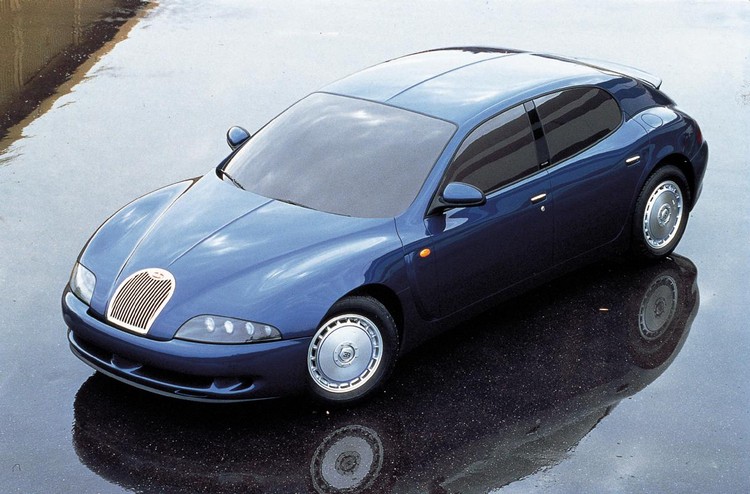
The 1993 EB112 limousine. Though Porsche will surely deny it, this must have been the inspration for their Panamera.
 As for the Bugatti company itself, sales are slow and also the presentation of the Giorgetto Giugiaro designed 4 door EB112 (with a 6-liter version of the V12 engine, with no turbo’s) in 1993 comes too late to save the company. In 1995 the Bugatti company would go bankrupt, several attempts to rescue the company are to no avail. Approximately 150 EB110’s were built, and two EB112’s. Dauer Racing GmbH of Nuremberg, Germany, bought the semi-finished EB 110 cars in the assembly plant plus the parts inventory through the bankruptcy trustee, and built a few additional cars.
As for the Bugatti company itself, sales are slow and also the presentation of the Giorgetto Giugiaro designed 4 door EB112 (with a 6-liter version of the V12 engine, with no turbo’s) in 1993 comes too late to save the company. In 1995 the Bugatti company would go bankrupt, several attempts to rescue the company are to no avail. Approximately 150 EB110’s were built, and two EB112’s. Dauer Racing GmbH of Nuremberg, Germany, bought the semi-finished EB 110 cars in the assembly plant plus the parts inventory through the bankruptcy trustee, and built a few additional cars.
A second revival
So, just when everybody thinks that Bugatti is now finally dead again, in comes Volkswagen and buys the marque in 1998, establishing Bugatti Automobiles S.A.S. Ferdinand Piëch, grandson of Ferdinand Porsche, then chairman and CEO of Volkswagen Group, had an important role in the founding of Bugatti Automobiles, and he still owns a pair of Bugatti Veyron’s. While the mechanicals are being developed in the various departments of Volkswagen, Giorgetto Giugiaro of ItalDesign is commissioned to produce the first concept vehicle, the EB118, a coupé that debutes at the 1998 Paris Auto Show, and is inspired by the EB112. It was powered by a 550HP, 6.3 liter, 72 Valve W18 engine. The engine has 18 cylinders, in 3 banks of 6, a first in automotive history.
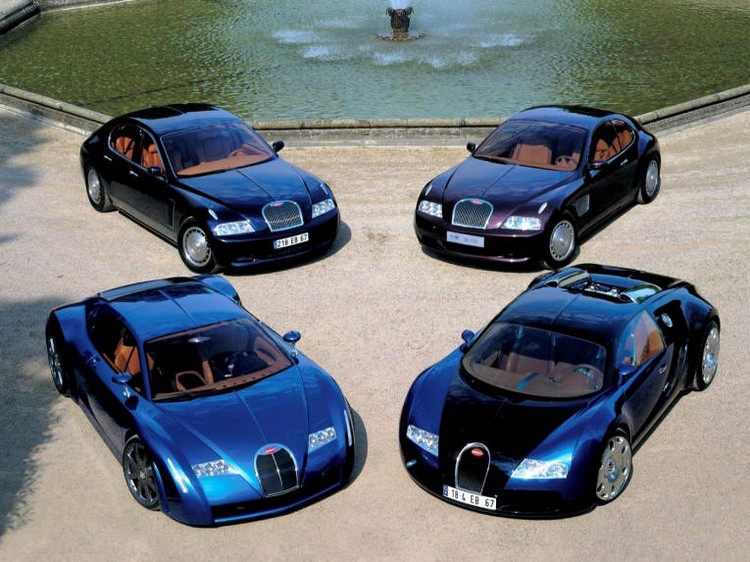
The New Bugatti’s, clockwise from top left: EB218, EB118, EB 18.4 Veyron and EB 18/3 Chiron.
Bugatti introduced three more concepts with the W18 engine, the four door EB 218 (a further development of the EB112) shown at the 1999 Geneva Motor Show, the 18/3 Chiron presented at the 1999 Frankfurt Motor Show (IAA), all designed by Italdesign. The 18.4 Veyron is the last one with this engine presented in 1999 at the Tokyo motor show. Both the Chiron and Veyron names are from famous Pre-War Bugatti racing drivers.
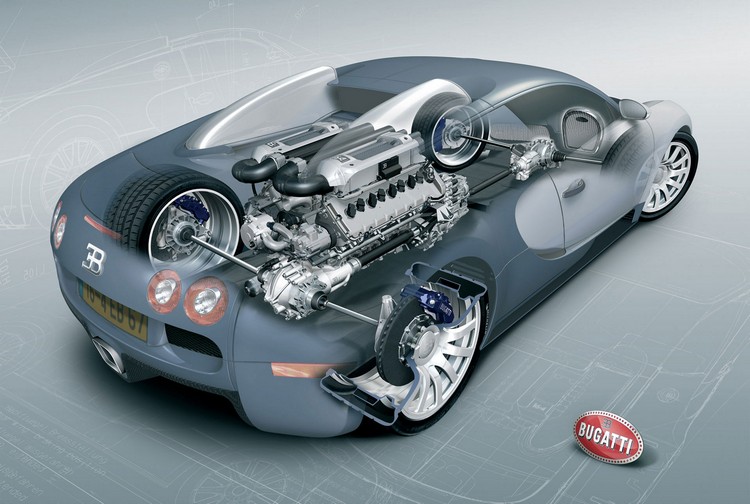
Drawing showing the mechanicals of the 16.4 Veyron, including the engine, permanent 4-wheel drive and double-clutch 7-speed gearbox.
Rumours are that Bugatti does not succeed in getting the W-18 engine to function well, especially the cooling of the engine. Also possible is that the power output was considered to be not sufficient to stand out over the
|
Sales director at Bugatti, dr. Stefan Brungs pictures the life of the Bugatti Veyron owner, compared to a Bentley owner:
A Bentley owner travels first class only, chooses only the penthouse of a 5-star hotel, and eats at restaurants with several Michelin stars.
The Bugatti owner is different: He doesn’t fly first class, he owns a jet, or usually various jets. He does not book a hotel room, he owns a hotel-wing, and of course a private cook accompanies him on his travels. On average, the Veyron owner also owns 41 other cars…
|
competition. Therefore, a new engine is developed, a W-16 engine of 8 liter with 4 turbochargers and 1001 HP. At that moment the most powerful production engine ever. This is presented the first time in the Bugatti 16.4 Veyron in 2000 at the Paris Motor Show. The design of the body didn´t evolve from the EB18.4 Veyron. The engine is in fact made of 2 VR8 engines placed in a V. Apparently, it is the same engine as in the Bentley 8.16 Hunaudières presented at the Geneva 1999 show.
After the presentation, it took Bugatti a lot of time to put the car into production, where it came even to a point that the press openly ridiculed Bugatti, stating that the car would never become a reality. However, finally in 2005 the first production Veyron was completed. For this, Bugatti SAS built a new assembly “atelier” in Dorlisheim, France, at about a mile from the original Bugatti factory in the neighbouring Molsheim. All components come from sub-contractors, or from VW plants in Germany. On February 23, 2015, Bugatti sold its last Veyron Grand Sport Vitesse, which was named La Finale. Thus, Bugatti had sold a total of 450 cars in 10 years. The Veyron does indeed reach a record speed, at 407 km/h. Something even Top Gear’s “Captain slow” could do with a standard Veyron, just insert the special “high speed” key which changes the aerodynamic characteristics of the Bugatti.
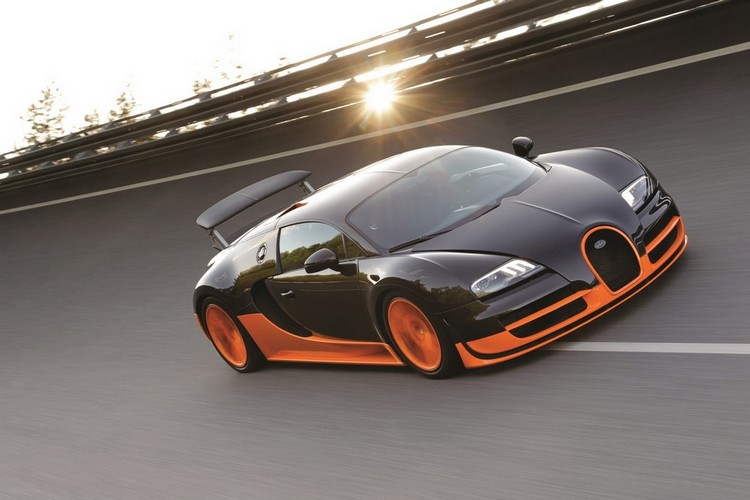
The Veyron Supersport in “world record edition” on it´s way to 431 km/h.
Although only 450 were produced, there were 4 versions of the Veyron. In 2009 the Veyron Grand Sport was introduced, an open “targa” version with a removable glass roof and an umbrella like softtop that can be used when suddenly caught in a storm. Also in 2009 the more powerful, lighter and more streamlined Supersport with larger turbo’s and intercoolers giving 1200HP is introduced, and of course, shortly after the more powerful engine is mated to the open car, called the Veyron Grand Sport Vitesse, the fastest Convertible on earth with 409 km/h. The closed sister by the way reaches a stunning 431 km/h.
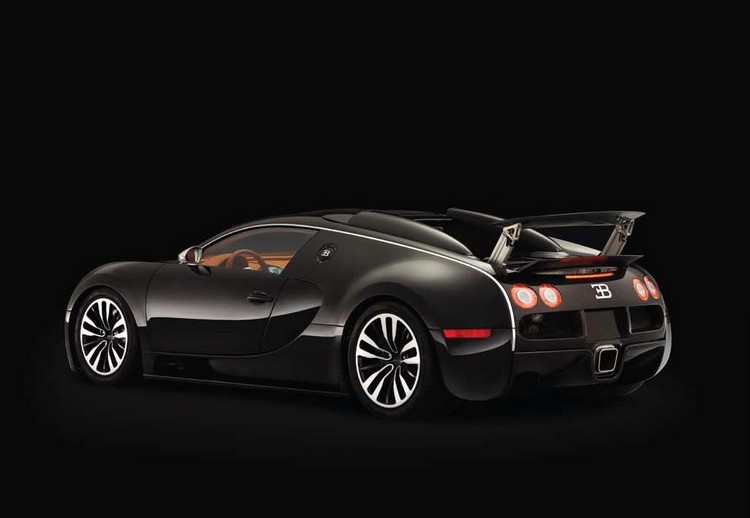
Bugatti Veyron special edition: Sang Noir of 2008
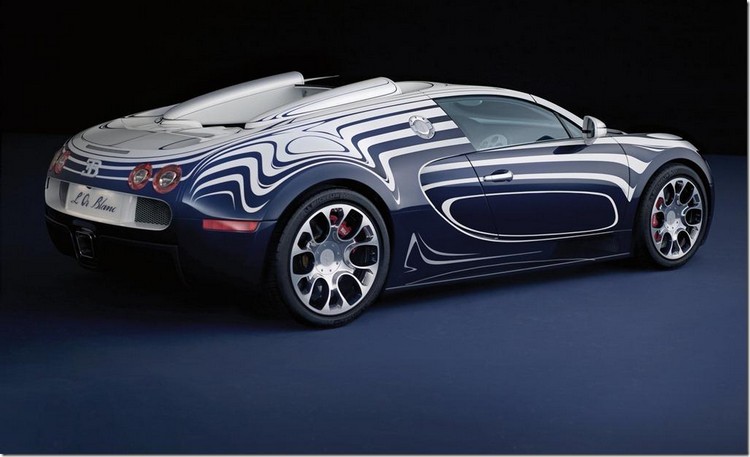
Veyron Grand Sport special “l’Or Blanc” with special paint and porcelain details inside and out. The paintjob is more innovative than you may think: The change from one colour to the other can not be felt; no thickness difference at all!
Enough to choose from, one would think, However, Bugatti would also present specials on a regular basis, these would usually have a special, innovative paint job, interior and wheels. Specials include: Veyron PurSang, Hermès Fbg, Sang Noir, Bleu Centenaire, L’Or Blanc, Grand Sport Venet, and a series of “Les Légendes de Bugatti”: Ettore Bugatti, Black Bess, Rembrandt Bugatti, Meo Costatini, Jean Bugatti and JP Wimille. Of these specials usually about 3 were made.
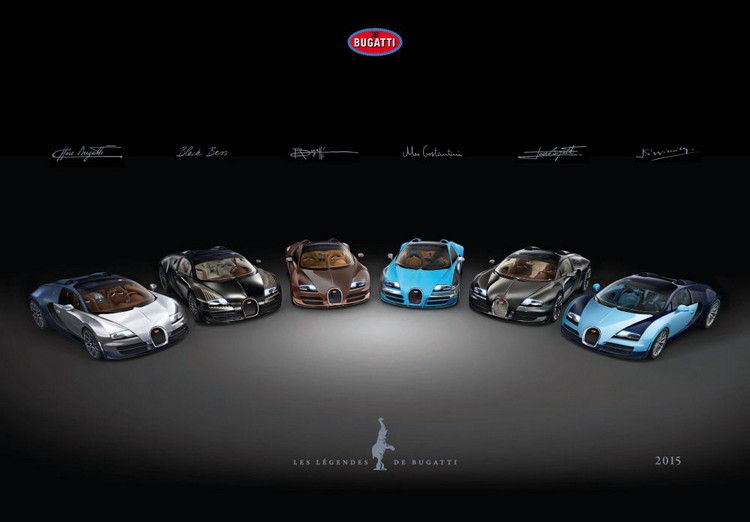
The Veyron Special editions: Les legendes
In 2009 a 4 door limo is presented, called 16C Galibier after a beautiful pre-war 4-door Bugatti T57. It features the same 8-litre 16-cylinder engine as the Veyron, but mounted at the front. Also the power with 2 turbo’s instead of 4 is reduced to 800HP, resulting in a topspeed of "only" 350 km/h. The length is approximately 5.30 meters, 80cm more than the Veyron. However, this 4-door Bugatti never reached production, though now recently, in 2016, Wolfgang Dürheimer, president of Bugatti states that this is again a possibility.
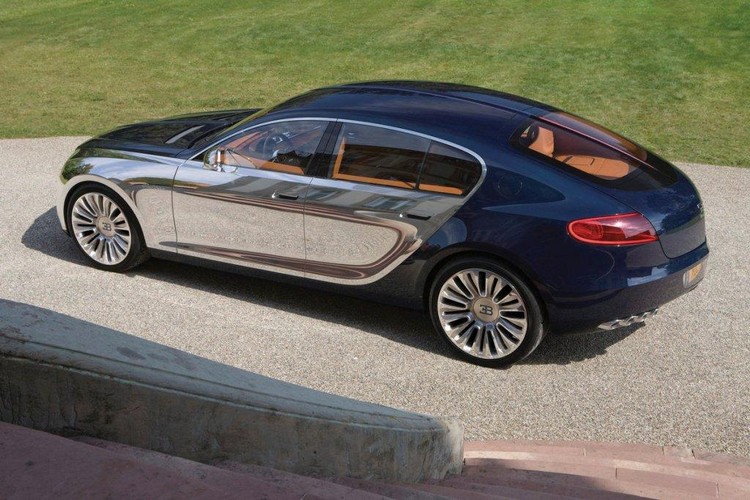
2009 Bugatti 16C Galibier 4-door prototype
In March 2016 the long awaited follow up for the Veyron was introduced, the 1500 HP Chiron. Both the name as well as the horsepower rating was known for over a year, though the shape was still unknown. The engine basically is the same, but now fitted with 4 two-stage turbochargers, a system developed by Bugatti especially for this car. To ensure maximum acceleration from a standstill without the “turbo lag” feared by sports car drivers, the Chiron moves off the mark with only two turbochargers in operation. The other two units are only activated at about 3,800 rpm. As a result, the two-stage turbocharging delivers an absolutely linear power curve from 2,000 rpm, huge torque in the low engine speed range and a power output that can be controlled and dosed rather well. Compared with the Veyron, the Chiron has the same wheelbase, but is 8 cm longer, and 4 cm wider. Of the 500 examples to be made of the Chiron, about one third has already been sold, some even before the car was presented at the Geneva motor show.
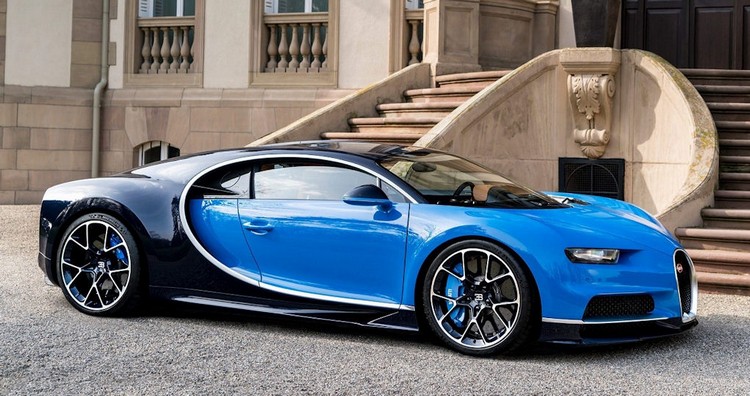
2016 Bugatti Chiron, 1500HP, 0-300km/h in 13.6s, top limited to 420 km/h, though unlimited probably over 460km/h.
|




















